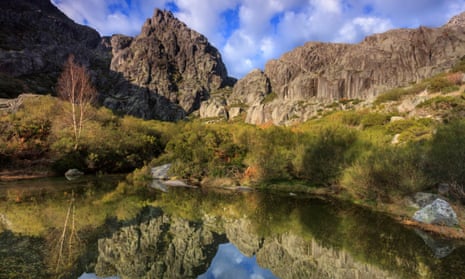José Manuel dos Santos, our guide, was looking a little sheepish. “You have to understand,” he said, “the beach isn’t normally like this.” We were sitting on a low bridge below the pretty village of Avô, right in the centre of Portugal, feet dangling above the crystal-clear River Alva, the sun on our backs, rushing water filling our ears. “You need to picture it full of people.”
I heard what he was saying, but silently rejoiced that we’d got to the river beaches of central Portugal before the crowds. Unfurling itself from its snowy slumbers, the Serra da Estrela national park to the east was in resplendent springtime mood. Purple-pink heather painted the hillsides, birdsong filled the air, and there was water, water everywhere.
The country is famous for golden beaches on its beautiful coastline, but Portugal’s less-visited interior is also home to hundreds of rustic river beaches. Some are large, most are small, but all, to the last pebble, are pristine, well-maintained and open to everyone.
Between them, the Serra da Estrela and Serra do Açor mountains a few miles south have 21 “official” praias fluviais (river beaches with basic services and, from July to September, lifeguards).
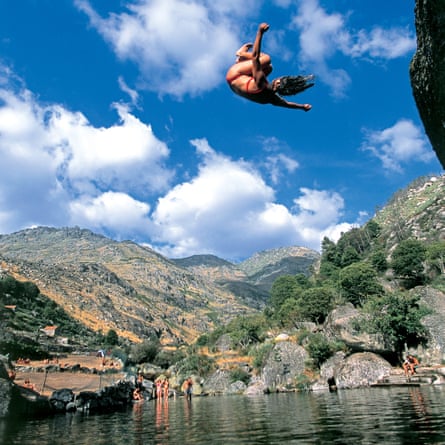
River “bank” would be a more accurate word than “beach”, especially in the mountains. Not so much a place for buckets and spades as picnics on the grass or, if you’re in the mood, dive-bombing from boulders into the river.
To get a feel for Portugal’s river beaches, I took a short road trip in and around the Serra da Estrela, between the historic city of Coimbra and the Spanish border.
Our first stop was at 1,437 metres above sea level, at the glacial lake Vale do Rossim. I shouldn’t have used the word “glacial”: it gave our two boys – aged 9 and 11 – the jitters. To encourage them, I dipped a toe in the water. It’s fine, I lied. “But best grab lunch first, no?”
We duly retired to the nearby Casa de São Lourenço, a stylish new hotel with a splendid restaurant and panoramic views. Over fish soup, slow-cooked goat (a local favourite) and regional cheeses, José laid out the programme for the coming few days. He reeled off half a dozen rivers, beaches and waterfall pools. Had the boys brought their swimming trunks? Now they looked sheepish. “Err … maybe,” mumbled the youngest.

Delaying our first dip until the next day, we spent a lovely afternoon exploring the shepherd’s huts and isolated cottages around Penhas Douradas, an elevated plain of granite boulders and sturdy shrubs in between the hotel and the lake.
At the turn of the last century, many of the buildings had been used as a sanatorium for Portuguese city-dwellers suffering from tuberculosis. Today, the majority stand empty. It is the same up and down these once-busy valleys: houses deserted, roofs collapsing, gardens run wild.
Once important centres in the wool and textile industry, the isolated villages and hamlets of Serra da Estrela – called aldeias do xisto (schist villages) – have gradually become depopulated. Fontão, in the south of the park, is down to its last year-round resident.

We learned more of the area’s history next day from Célia Gonçalves, the cheerful representative of a newish government-backed project called Aldeias de Montanha (Mountain Villages), working with some 40 rural communities in the southern half of the park.
As part of the project, residents in some villages organise weekend festivals highlighting specific local traditions. In Alvoco da Serra over the penultimate weekend in June, for instance, there’s a two-day party to celebrate the summer solstice. Every other July, meanwhile, singers and musicians perform in a glade in the woods just outside Lapa dos Dinheiros (which also has a river beach).
Celia’s history lesson was delivered over lunch, this time in O Vicente, a small restaurant in the village of Loriga, with a terrific view across the valley to Serra do Açor. Goat was on the menu again, but this time with a starter of broa de Loriga (a maize bread particular to the village) and a slab of buttery Serra da Estrela sheep’s cheese, renowned across Portugal.
On the high slopes of a glacial valley, Loriga is home to one of the area’s most popular river beaches. The watercourse is partially dammed in the summer to create a deep pool, which is as calm as the main current is ferocious. Both are freezing.
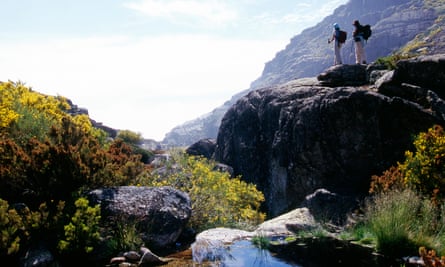
A lone group of bikers was looking down from the Roman-era bridge above the beach on the day we visited. Below, several children were playing on swings and slides. A cluster of picnic tables and a small cafe hugged the bank.
As with all the river beaches in central Portugal, the delights of Loriga’s grassy banks and snow-melt waters are mostly enjoyed by a local crowd. The only other group who come in any numbers are Portuguese emigrés, home for the summer.
“Spending the summer months playing at the river beaches with other kids their own age – it gives their children something fun to look forward to,” Celia notes.
Regrettably, my pair were not at hand to put her claim to the test. The night before, we had booked into one of six self-catering cottages at Chão do Rio, a sizable farm on the edge of the tiny village of Travancinha.
Outside the spacious cottage, the boys had discovered hammocks and bikes and acres of space to explore. Come morning, they were not for budging.
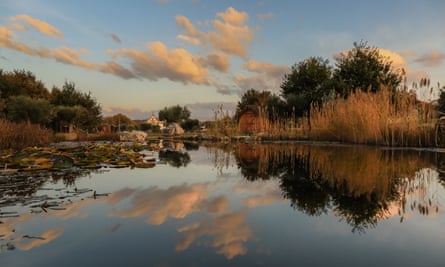
In the end, their obduracy proved fortuitous as it gave me a day to hit the hills alone with Célia and José. Every road is a switchback in Serra da Estrela, which is great for jaw-dropping vistas but not so good for carsickness-prone children full of Chão do Rio’s abundant breakfast.
Leaving Loriga after a gentle post-prandial stroll around the village (each village in the scheme has signposted walks of differing lengths), we headed across to the neighbouring valley to the wonderful waterfalls at Poço da Broca – another classified river beach.
The route took us past Trutas do Aguincho, a backwoods trout farm run by Carlos and Paulinha, where visitors can bring their own rods and try their luck in a large pond beside the breeding pens.

It was a weekend afternoon when we called in and everyone was full of the joys of spring. They were also full of wine and fried trout, which Paulinha cooks in her “secret” beer-infused sauce.
Back at Chão do Rio, I found the children at the farm’s “biological pool”. Adorned with lilies and populated by frogs, the manmade pond provided them with a day of riotous, water-splashing fun.
And after that, there was no stopping them: bouldering across the upper reaches of the Zêzere River, wading beneath the Fraga da Pena waterfalls, skimming stones on the shingle beach of Caneiro de Côja. You name it, they were in it.

By the time we reached Avô and the River Alva, the snorkel had come out and the boys were straight into the depths, any hint of squeamishness gone. Wasn’t I going to join them, José asked. Sure, of course. “But …” I check my watch. “After lunch, eh?”
Getting there
Take a train from Lisbon (1hr 44min) or Porto (1 hr) to Coimbra, which has several car hire outlets (there is barely any public transport in the national park, so a car is essential)
Where to stay
Chão do Rio has thatched cottages sleeping four from €160 a night B&B. Quinta da Palmeira, a country house hotel in Cerdeira, has doubles from €70 B&B. O Vicente in Loriga has doubles from €57 B&B. Casa das Penhas Douradas in Penhas Douradas has doubles from €115 B&B
The trip was provided by the Center of Portugal tourism board
Five more inland beaches
by Edwina Pitcher, author of Wild Guide Portugal
Praia Fluvial do Alamal
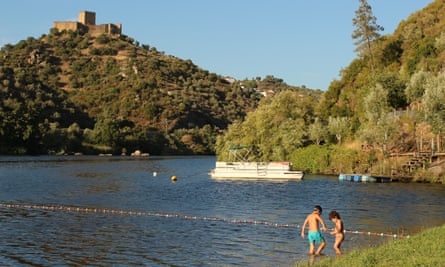
About 100 miles north-east of Lisbon, opposite the village of Belver, the Tagus River runs slow and wide past banks of soft sand. Medieval Belver Castle rises imperiously from the wooded hills, and the riverside cafe by the camping area does great fish.
Signposted from Gavião. Map location: 39.4880, -7.9675
Praia Fluvial de Mondim da Beira
In this northern Portuguese village, stone steps lead down from the Romanesque bridge to the riverbank. The Varosa River fills shallow pools, perfect for young children. There is a cafe and picnic tables, and woodland up and down river.
From Lamego take the N226 towards Tarouca. Map location: 41.0143, -7.7503
Fonte do Pego
The Ponsul River winds through the drier plains of central Portugal to tumble over granite and quartz into this pool. Nearby rocks teem with trace fossils: known locally as “painted snakes”, they are thought to be 490 million years old. There are inspired trilobite-shaped pool-floats to play on, and compost loos.
Signposted from Penha Garcia. Map location: 40.0438, -7.0143
Praia Fluvial do Poço de Corga

Two hours’ drive north of Lisbon, three tiers of bathing pools of varying depths are filled by the River Pêra. After drying off on large boulders, tourists can visit an old olive oil press and museum upstream.
From Castanheira de Pera take the N236 north. Map location: 40.0250, -8.1902
Praia Fluvial de Alte
Just outside the peaceful Algarve mountain town of Alte, with its low, whitewashed houses, are two stone swimming pools each filled by a spring, Fonte Grande and Fonte Pequena. There are cafes and bars nearby.
Arriving at Alte, follow the signs for Fontes. Map location: 37.2375, -8.1732
Looking for a holiday with a difference? Browse Guardian Holidays to see a range of fantastic trips
